Materials for plastic injection molding have names that resemble chemistry class words. The fact that polypropylene rhymes with polythene and has a similar acronym (PP) a polystyrene makes it difficult enough (PS). Knowing your application needs, which might vary between prototype and production, is especially important when choosing the right material de moldeo por inyección. The good news is that selecting the proper material doesn’t need a science Ph.D. Though there are numerous things to consider, everything begins with the fundamentals.
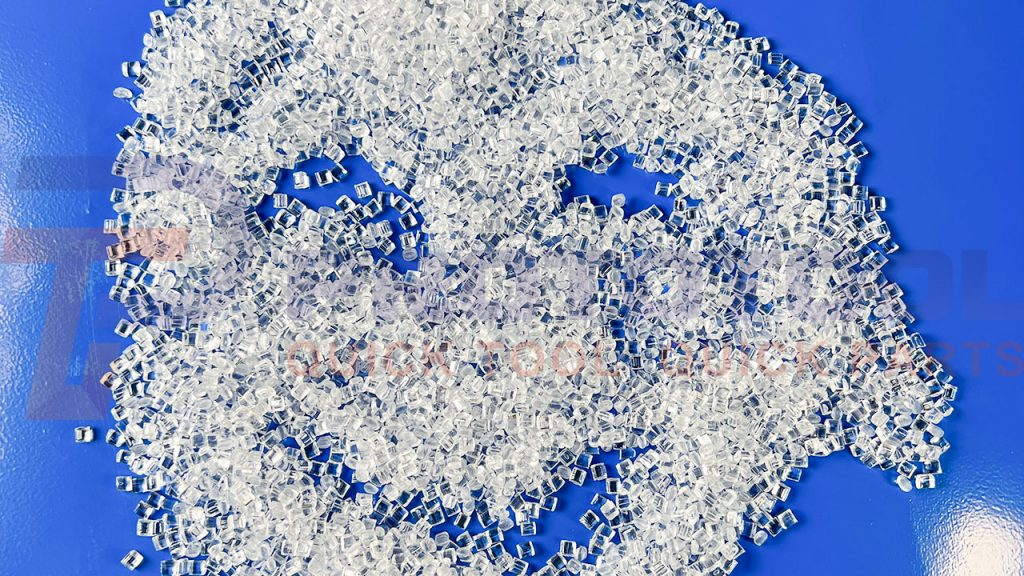
The purpose of the component and the physical environment to which it will be subjected must be taken into account before selecting injection molding materials. As a result, you must explicitly analyze what injection molding material will withstand various environmental difficulties such as temperature variations, moisture, chemical exposure, UV radiation, and many more. The material’s strength, longevity, flexibility, color, and price are factors to consider. To help you focus your search, we’ll go through the characteristics of the common injection molding materials that professional manufacturers use for the bulk of their components.
Nylon
One of the most adaptable injection molding materials is nylon, often known as polymer fabric, because of its many properties. Along with fishnets, vehicle tires, and electrical uses like insulators, it is utilized for a variety of clothing items. As an material de moldeo por inyección, nylon offers several benefits. One amongst them is that it has high abrasion resistance, which makes it durable and springy by nature. On the other side, the material’s tendency to melt quickly is one of its drawbacks. This makes using the material in its liquid condition difficult. Additionally, it takes in the water straight from the air or from moisture in the air.
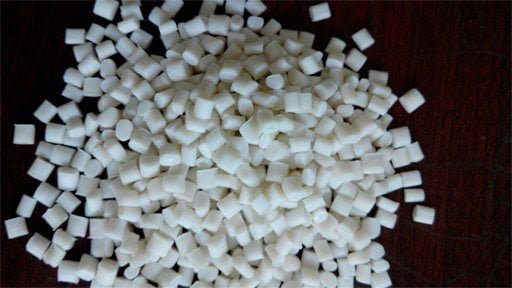
Polyethylene High Density (HDPE)
High-density polythene (HDPE) is an material de moldeo por inyección that is a robust, solid plastic thermoplastic primarily used in plastic bottles, shampoo bottles, juguetes, recycling binsy flower pots. The key benefit of choosing HDPE is that it is both reasonably priced and made of rigid, durable material. The drawbacks of HDPE include its high flammability and lack of biodegradability, which makes it difficult to dispose of. High-density polythene also has poor weathering and cannot be assembled.
Polyethene Low Density (LDPE)
Low-density polythene is a lot softer and more flexible than high-density polythene. Bottles, plastic bags, wraps, and playground slides are all made using low-density polythene using the proceso de moldeo por inyección. The advantages of employing such injection molding materials include their resistance to dampness and chemicals. Additionally, it is affordable and high-quality to be used in food, making it safe.
Low density also has the drawback of being potentially flammable and having weak temperature capacity, making it risky near a fire. Furthermore, it can be challenging to connect and has weak weather resilience.
Policarbonato (PC)
Another transparent injection molding material with good optical characteristics and high durability is polycarbonate. Because of its predictable and consistent mold shrinkage, this amorphous thermoplastic material allows for precise dimensional control to be maintained. Transparent polycarbonate is a robust, durable injection molding material used in engineering. PC is used in compact discs, protection hamlets, bulletproof glass, and other electronic and telecommunications technology.
The perks include its superb quality and practically intolerable bullet resistance. It also guards against discoloration; however, prolonged UV radiation exposure might cause it to turn yellow. Furthermore, it might be scratch sensitive.
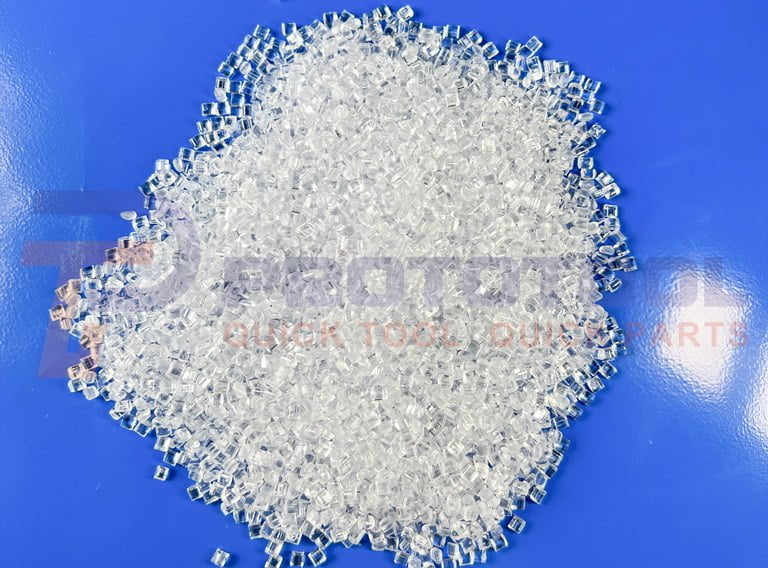
Polyoxymethylene (POM)
POM, commonly known as acetal, is a robust and durable material de moldeo por inyección. Automotive components can be made using acetal. Strong, resilient, and rigid describe this engineering thermoplastic substance. Ball bearings, fasteners, knife handles, and gears are some of the items it is frequently used to make. Acetal is also used in the manufacture of zippers, fan wheels, door handles, lock mechanismsy insulin pens. In addition to having a high gloss finish, it is resistant to all chemicals and organic solvents save for phenols. Due to its weak acid resistance, UV sensitivity, and difficulty in bonding, it has these drawbacks.
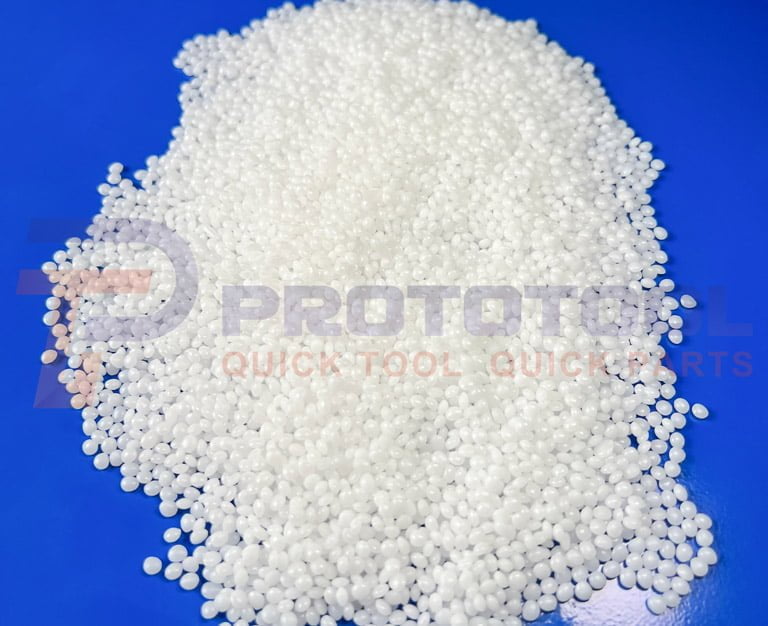
Acrylic Poly (Methyl Methacrylate) (PMMA)
Acrílico is one of the injection molding materials that comes in a thin sheet and is frequently used as an alternative to glass. PMMA or acrylic is another name for poly(methyl methacrylate). It is a sturdy, transparent thermoplastic that offers glass a less heavy, shatter-resistant substitute. A significant amount of light may travel through PMMA because of its transparency and exceptional optical clarity. PMMA utilizes a wide variety of items, including windows, eyeglass lensesy car taillights. Acrylic offers a high gloss, superior abrasion resistance, and the ability to withstand weathering benefits.
Polyurethane Thermoplastic (TPU)
TPU offers a wide range of characteristics, including flexibility, transparency, and resistance. Its characteristics include its soft and firm portions. This sort of plastic is most commonly used in phone covers, keyboard protectorsy footwear. Polyurethane possesses excellent toughness and flexibility and is resistant to impacts such as tearing, as well as grease and oil. Considering how little it reacts to tear over time, it has good dimensional stability.
Rubber Thermoplastic (TPR)
Elastomer, often known as thermoplastic rubber, is another material de moldeo por inyección. Rubber and plastic pieces are mixed in them. Utilized in numerous applications like household appliances and automobile parts like wire and cable insulation. One benefit is the capacity to stretch and return to its original shape. Because it doesn’t include recyclable, non-toxic plastics, it is also less harmful to the environment. Furthermore, buying such material may be rather pricey. The material can withstand high temperatures, although doing so might cause it to lose its rubbery quality.
Polipropileno (PP)
Polipropilenotambién conocido como polypropene, is the final injection molding material we will examine. A thermoplastic polymer with a wide range of uses, polypropene is expected to have the highest revenue share in 2020, at 34.2 percent. Since it doesn’t combine chemicals with food goods, it is most frequently used in the food storage and packaging business. This material’s excellent impact strength and superior moisture resistance are further advantages. The drawbacks are that it can be weakened by UV and lose 70% of its power when exposed to sunlight. Additionally, it may be combustible because of the chemical it contains.
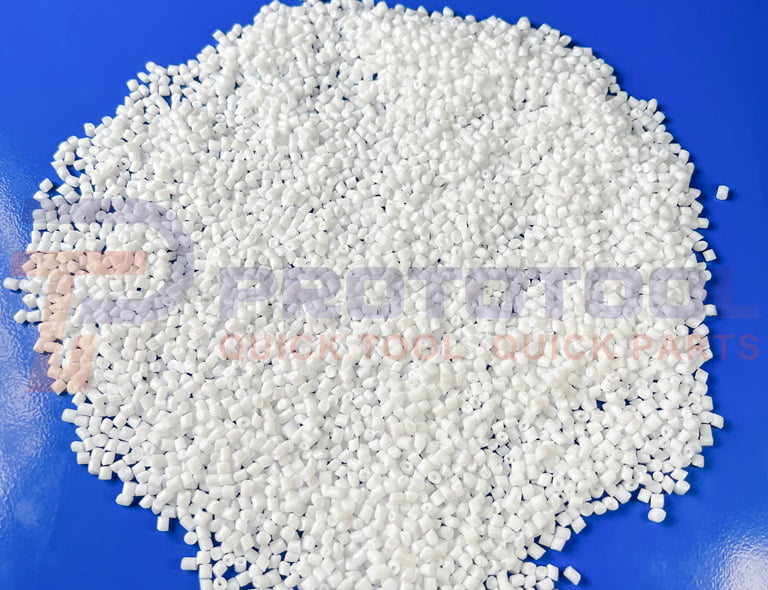
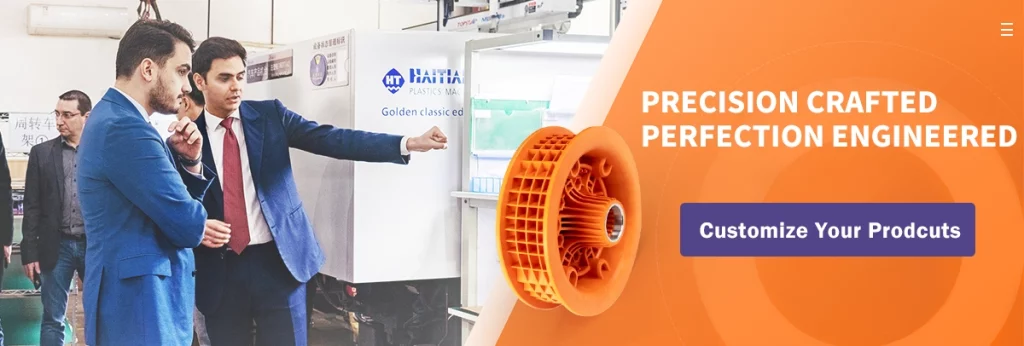
What Materials to Use for Your Injection Molding Project?
You may choose from a massive selection of injection molding materials for your project. This makes it challenging to choose a material outright, even while it guarantees that you are exposed to various materials. Though, don’t be concerned. You may select the material for your project in a certain method. You may achieve this by comprehending the final product’s purpose and intended environment. With this information, you may pick material with the qualities you need to get what you desire. The following material characteristics will help you make your choice.
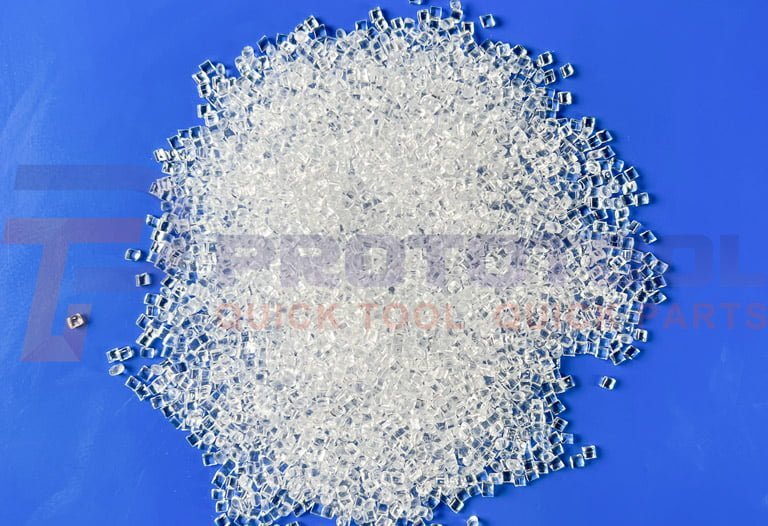
The flexibility of common injection molding materials
This misunderstanding of injection molding material’s flexibility and hardness exists. The consensus is that we should use flexible soft materials instead of rigid hard ones. That is untrue, though. Soft and flexible plastic materials are possible. Both rigid and flexible qualities are possible. The capacity to withstand bending stress is called stiffness.
Common injection molding materials Difficulty
You must take the injection molding material’s hardness into account while selecting an injection molding material. Shore hardness is used to rank every material. Material hardness is significant since it reveals the material’s environmental suitability and abrasion resistance.
Chemical Defense
If you require a product that can operate in various environmental circumstances, you should look at its chemical resistance quality. These substances need to be impervious to things like moisture, acidsy alkalis. The best materials for this purpose include nylon, polycarbonatey acrílico.
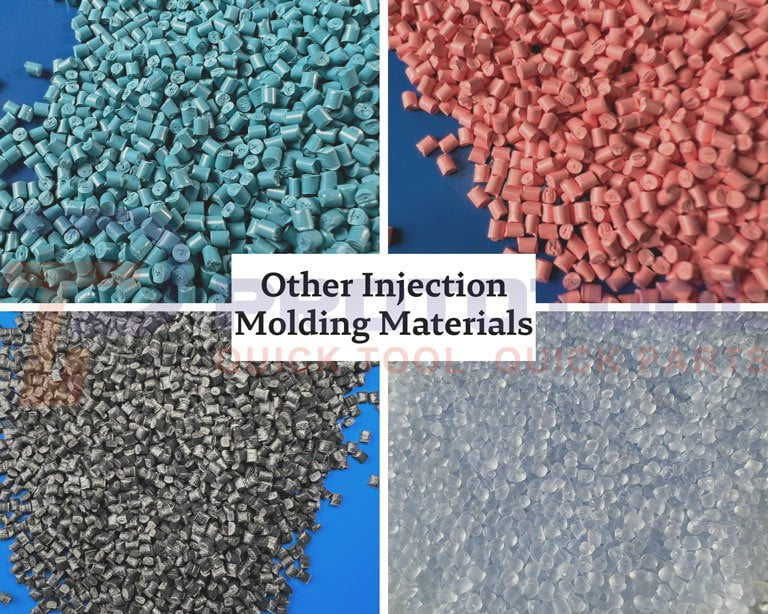
common injection molding materials Price
When choosing injection molding materials, price should be the main consideration. Considering the cost is normal, it shouldn’t take precedence over other qualities. Nylon is expensive compared to the other main injection molding materials covered above; polythene is less expensive.
Miscellaneous
The existence of additional chemical components should be another aspect you take into account when selecting injection molding materials. For example, if the plastic includes Bisphenol-A, it is unsuitable for food-related applications. In addition, some materials have color, transparency, and the capacity to mix with other materials.
Prototool is your one-stop shop for CNC machining and injection moulding services. All you need to do is provide them with the product design and the materials and then let them do the magic. They will go above and beyond to ensure you have a positive and dependable experience utilizing their services because they have a considerable understanding of the field.
Or, if you have anything you do not know about injection molding materials, it’s welcome to contact us to discuss it for your product.










